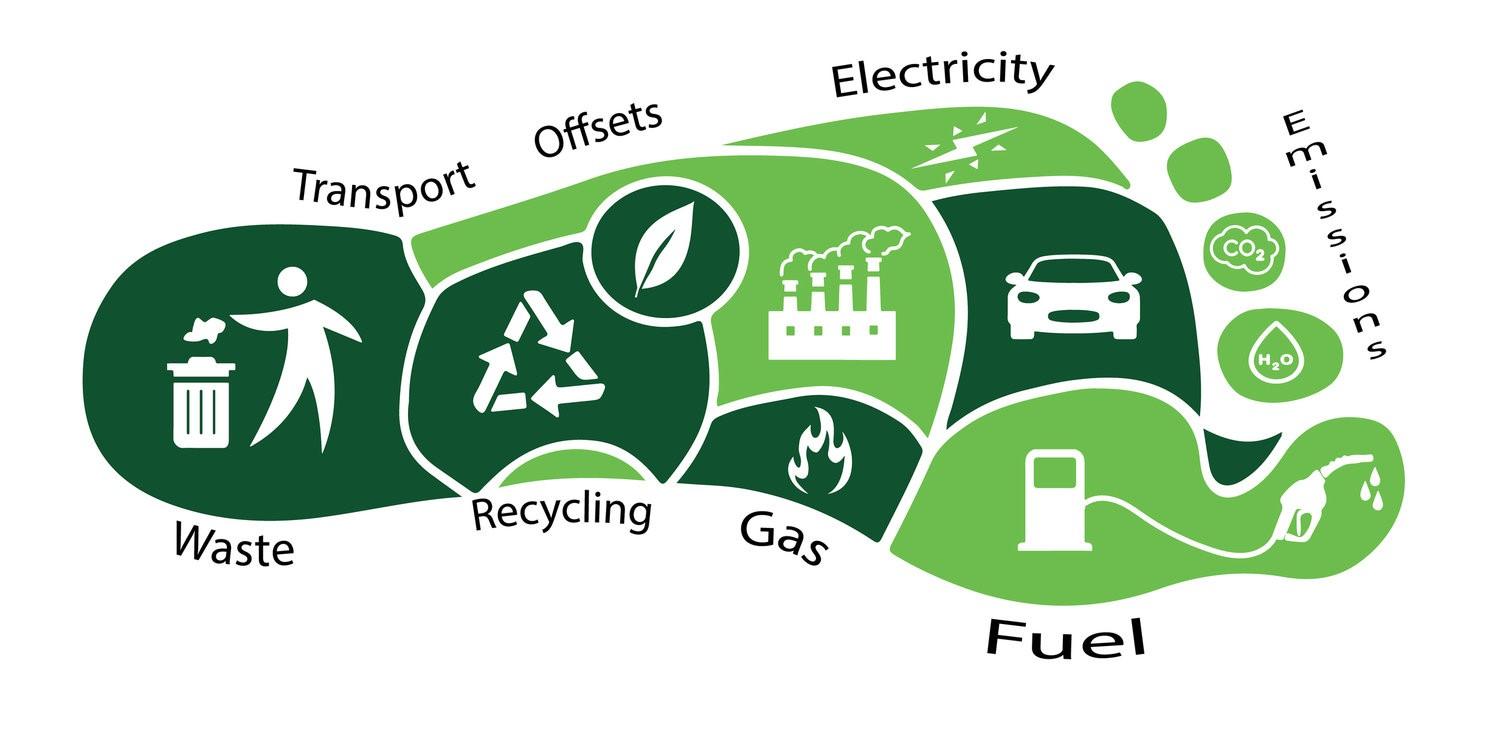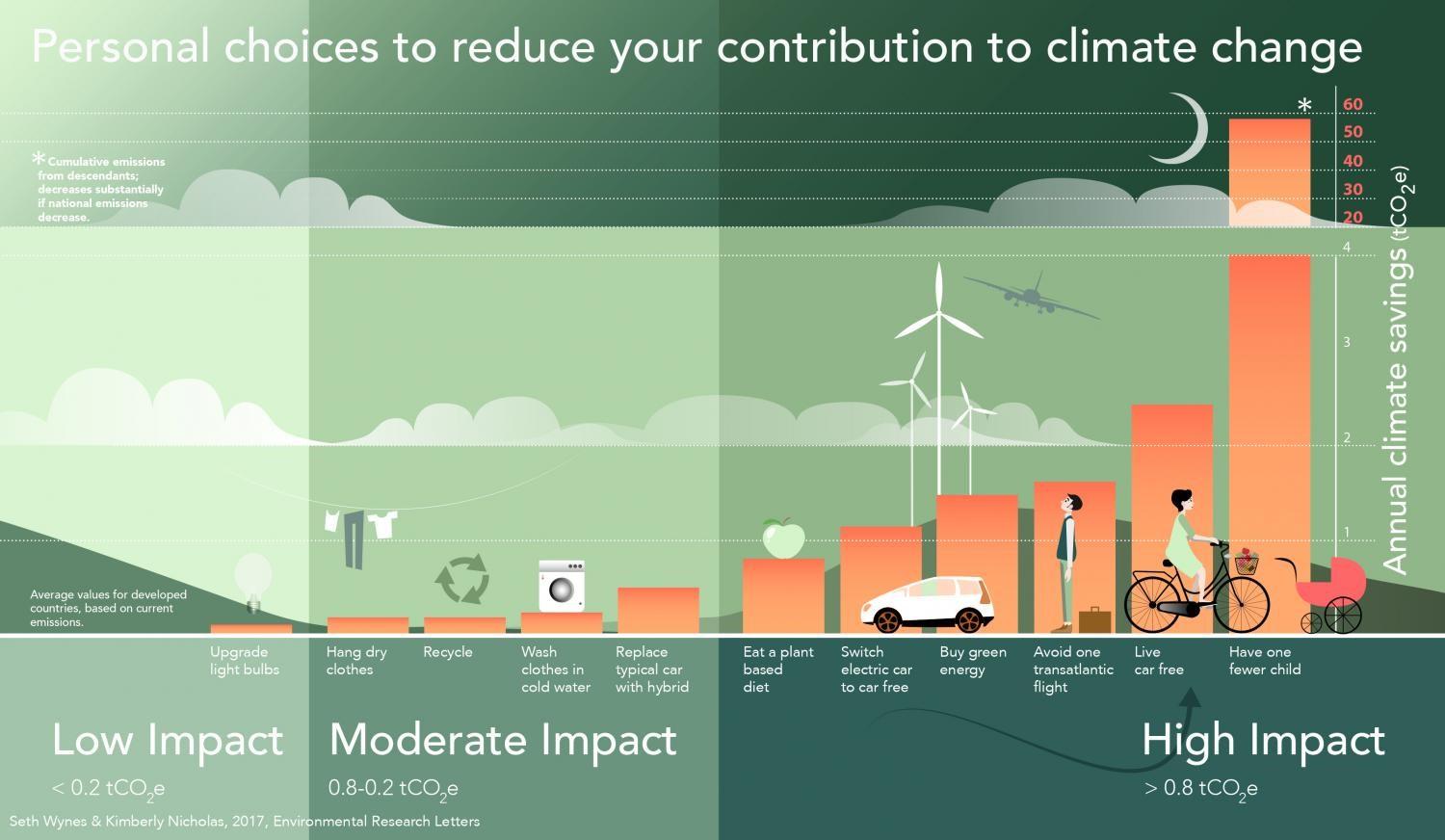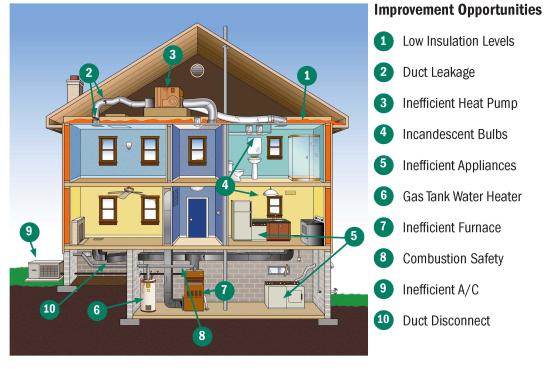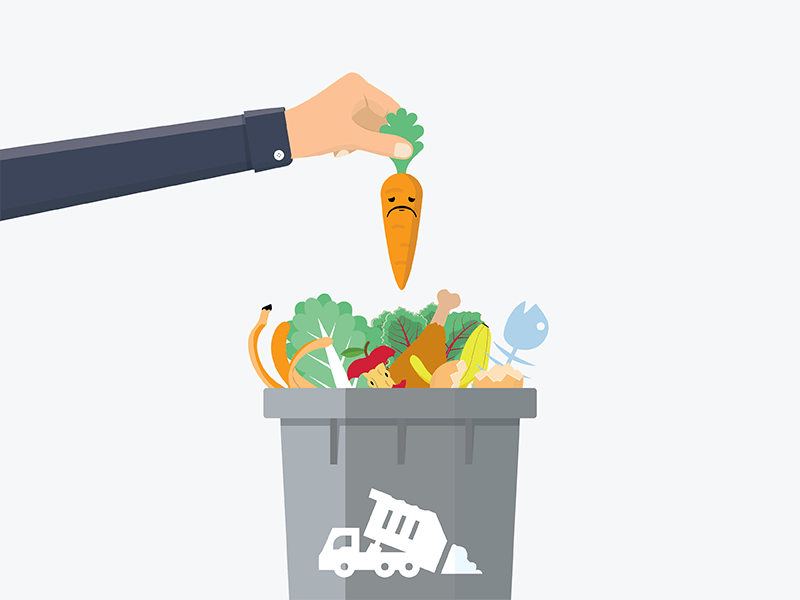In the face of climate change, one of the gravest and most complex challenges our collective societies have ever faced, many individuals and organizations are asking the natural question: what can we do personally to minimize our impact?
Many thought leaders indeed espouse the mantra that true change will come via systematic and societal change rather than through shaming individuals for their actions. Indeed, reports have shown that over 70% of global emissions since 1988 have come at the hands of just 100 global companies. However, the doom and gloom of the frequent climate change reports and mixed targets has people looking for ways to take action. By remaining idle, people are more prone to what the psychiatric community has started to describe as “climate grief.”
Instead, millions are taking to the Internet and trusted resources to find out what action can be taken. And the result isn’t just to minimize personal guilt, but in fact collective action—changes in diets, driving habits, energy use, and more—can add up to be a powerful climate tool in aggregate. Even last Fall’s report from the United Nations Intergovernmental Panel on Climate Change (IPCC) made a pivot to stress that individual actions, in addition to collective actions, would be required to mitigate and prevent the worst potential climate change impacts, particularly when changes in behavior and lifestyle were enacted in complement of technological and structural change. The impact of such individual actions would be even greater in areas with higher wealth and inherently higher consumption lifestyles.
Source: Phys.org
So while the most impactful act an individual may be able to do to affect the climate in a positive way is likely voting for candidates and policies that will drive the needed systematic changes, many concerned citizens are looking at their personal carbon footprint and seeking out a way for them to improve.
A particular challenge, though, has been that as far back as the 1970s when conservation and energy efficiency was being touted by President Jimmy Carter amid the oil crisis, the energy-conscious lifestyle changes have been unfairly and unnecessarily associated with sacrifice and a decline in quality of life. The truth of modern technology and creative innovation across energy-related sectors, though, is that individual climate-positive actions can be made that maintain or even improve quality of life.
Seeking Ways to Empower Individual Climate Action
These facts lead Solar Tribune to a set of very important questions: What are the most impactful personal actions that individuals or small organizations can embrace to reduce carbon footprint and help mitigate climate change? What exactly is the measurable impact, as well as difficulty of those actions? And how can we educate the public on choosing and implementing these strategies.
These questions must not remain theoretical, and so we’re looking to bring together the great energy and climate minds to kick off this much-needed conversation. Similar to our compendium on what climate policy mechanisms are the most critical in the public push towards effective action, Solar Tribune plans to reach out to leaders across the relevant industries to ask the above simple, but necessary, questions.
Below we’ve highlighted the main categories under which the answers to those questions may come, kicking it off with some publicly available information on potential options. As we engage in these conversations with thought leaders, we’ll update this page with their input, the big ideas, and the critical conversation. In that way, this page will quickly become an anthology of approaches and strategies to move climate-positive action into what we need them to be for the next decade and how those ideas can be best promoted.
If you have questions, thoughts, or want to add your voice to the mix in this collection of ideas, please reach out to us directly.
Investment
Investing in Climate Positive Companies
Source: Grist
What the action looks like: While voting in elections will directly impact leaders who make climate impactful policy, for better or worse, but many would argue that rather than waiting for sparse elections a more direct way to voice your views is to vote with your dollars. If you have an investment portfolio, you may opt to identify companies who are working to mitigate or prevent climate change through their business operations or even just through corporate social responsibility (CSR). Further, as an investor (no matter how small) in any publicly traded company, you can make your voice heard and push for more climate-positive actions in shareholder meetings.
Example of the impact is: As one example highlighted by the United States Sustainable Investment Foundation (USSIF):
In 2009, a proposal from Trillium Asset Management asking Idacorp, an electric utility, to set greenhouse gas emission goals was supported by 51 percent of the shares voted, prompting the company to set a goal of reducing its carbon dioxide emissions intensity in the years 2010-2013 to 10–15 percent below the level in 2005. In its 2012 sustainability report, it reported that it had succeeded in reducing its carbon intensity 27 percent in 2012 from the 2005 level.
Level of difficulty: Medium—requires a person to have money to invest, the knowhow on how to direct their investments, and the research into what companies would be most positive or what actions they should encourage as a shareholder.
Relevant quotes, stakeholders, and resources:
“We believe that this wave of sustainable investment can deliver strong long-term returns because it is common sense that you would consider the ESG factors around any business model. This is not a trade-off of values for value.” – Lila Preston, co-head of the growth equity team at Generation Investment Management as quoted by Financial Times
“Divestment is an important symbol, but it’s symbolic. The oil and gas companies seem to be doing pretty well regardless of $6 trillion having been divested by various college funds and other endowments over the last several years.” – Richard Heede, Co-founder and co-director of the Climate Accountability Institute in Vox.com interview
Investing to Curb Climate Change: A Guide for the Individual Investor by USSIF
Divesting from Companies Harmful to the Climate
Source: The sideways view
What the action looks like: Just as investing in climate positive companies can reinforce and support those public companies that are making the right steps when it comes to climate change, pulling your existing funds out of companies that aren’t taking those proactive steps is another way to let your wallet speak for you. As more individuals divest from companies that are shouldering a disproportionate load of climate responsibility without taking the necessary steps to move away from those carbon emitting activities fast enough, it sends price signals and can be enough to influence change within said companies that would have more business reason to clean up their act than ever before.
What the impact is: The impact is more intangible with divestment, though a peer-reviewed article in the Sustainability journal notes:
Divestment seems to have imparted a need for action on finance and climate change in the finance world, where a discussion has developed around the pros and cons of divestment versus alternatives; this discussion is itself evidence of impact
Level of difficulty: Medium—requires a person to have money already invested in these companies in some way, the knowhow on how to redirect their investments, and the research into what companies deserve divestment from your portfolio today.
Relevant quotes, stakeholders, and resources:
“In short: it just doesn’t make sense for individuals to hold stock in fossil fuel companies while understanding the consequence of climate change. The one thing we know the fossil fuel industry cares about is money. Collectively, we invest a lot of it. If you help to lead a personal divestment campaign focused on the stigmatization of these bad actors — weakening their political capital — we can help the momentum of climate solutions and sustainable economies. This was a key part of how the world ended the apartheid system in South Africa, and we hope it can have the same effect on the climate crisis.” – Statement on personal divestment from 350.org
“Divestment, to date, probably has reduced about zero tonnes of emissions. It’s not like you’ve capital-starved [the] people making steel and gasoline,” he said. “I don’t know the mechanism of action where divestment [keeps] emissions [from] going up every year. I’m just too damn numeric.” – Bill Gates, as quoted by Financial Times
Fossil Fuel Divestment & Reinvestment by USSIF
Energy Providers
Install Solar Power at Home
Source: Solar Tribune
What the action looks like: Energy used in the home is a contributor towards personal carbon footprints because in even the most decarbonized of grids there are still fossil fuels being burned for at least a portion of the electricity mix. While that concentration of renewable energy can vary (from 86% in Maine to 13% in Wyoming), no matter where you live one of the most guaranteed ways to make sure your energy comes without CO2 emissions attached is to generate it yourself renewably. The accelerated proliferation of residential solar installations shows how popular that is, and while you’re unlikely to be able to go completely off the grid just by installing solar, the more solar energy you produce on your property the less you’ll be associated with the carbon emissions from your region’s power grid.
What the impact is: As calculated by Andrew Blakers, a Professor of Engineering at Australian National University:
A 10-kilowatt solar PV system installed on your roof will produce about 14 MWh of electricity per year. Since coal power stations produce 0.9 tonnes of carbon dioxide per MWh this save about 12 tonnes of CO2 emissions per year.
Level of difficulty: Medium—the path is straightforward, but the costs can be prohibitive and homes with incompatible roofs or people who rent instead of own may not have the option.
Relevant quotes, stakeholders, and resources:
Planning a Home Solar Electric System by U.S. Department of Energy
A Maryland Consumer’s Guide to Solar by The Maryland Energy Administration
The Environmental and Public Health Benefits of Achieving High Penetration of Solar Energy in the United States by U.S. Department of Energy
Switch to Green Energy Providers
Source: KHMER Times
What the action looks like: In certain parts of the country, the utility market isn’t the monopoly it always was and customers actually have the ability to choose whichever retail electricity provider they like. While the areas where such deregulated markets exist encompass a minority of the U.S. population, those who do have the option can leave their legacy utility for whatever reason they see fit, whether that’s more affordable rates, more customizable programs, or to choose an energy provider who has more renewable energy in it’s generation mix. Such customers can do their research and identify green energy providers and make the choice to switch so that the energy they use in their home accounts for fewer carbon emissions. Note that when you switch providers, your home is still attached to the same grid and the physical electrons going into your home are indistinguishable from what they were before, but your payments go towards the renewable energy certificates (R.E.C.s) that funnel the funds from your payment to those who generated the same amount of renewable energy.
What the impact is: As quoted by the New York Times, John Rogers—a senior energy analyst at the Union of Concerned Scientists—says:
Short of having a solar array on your roof and keeping all those electrons to yourself, it’d be really hard to figure out what type of electrons you’re using if you didn’t have something like R.E.C.s to keep track of the math…certificates are a legitimate way to foster the growth of the renewable energy industry.
Level of difficulty: Easy—that is if energy choice is available in your home market.
Relevant quotes, stakeholders, and resources:
Buying Clean Electricity by U.S. Department of Energy
Frequently Asked Questions About Switching to Green Power by Green Energy Consumers Alliance
Green Options by Maryland Public Service Commission
Transportation
Purchase an Electric Vehicle
Source: Wall Street Journal
What the action looks like: Every decade or so on average, Americans buy a new car. In recent years, purchasing an electric vehicle has become a more attainable decision for common citizens as prices come down and battery ranges go up. While gasoline powered cars have continued to make marginal increases in efficiency, expressed in terms of CO2 emissions per mile, electric vehicles greatly surpass the equivalent emissions of those cars and even hybrid cars. By being powered by the grid, which is more carbon efficient than gasoline powered engines (and getting less carbon intensive by the year as the grid decarbonizes), driving an EV becomes a cleaner decision with each year that passes.
What the impact is: According to an explainer by Carbon Brief:
In the UK in 2019, the lifetime emissions per kilometre of driving a Nissan Leaf EV were about three times lower than for the average conventional car, even before accounting for the falling carbon intensity of electricity generation during the car’s lifetime.
Level of difficulty: Medium—new EV models with customer friendly prices are becoming available every day, as is availability of public EV chargers. The ease will only become greater with time.
Relevant quotes, stakeholders, and resources:
Emissions from Hybrid and Plug-In Electric Vehicles by U.S. Department of Energy
Take Public Transportation
Source: Solaris Bus & Coach SA
What the action looks like: People naturally need to get to and from work, school, and elsewhere, and buying an electric vehicle or even a fuel-efficient vehicle might not be practical for them from a cost or logistics standpoint. However, they can still make significant impact on their carbon footprints by opting to take public transportation rather than driving their car (or taking a Taxi or calling an Uber) whenever possible. The name of the game for public transportation is efficiency; buses and trains are running on a regular basis and the more people who can be taken to their end destination with them, the greater ‘value’ is taken from the emissions that propelled those vehicles. More people on public transportation reduces the amount of GHG-emitting cars on the road, reducing traffic which helps bring down transportation-sector emissions even further.
What the impact is: According to the Federal Transit Administration:
Heavy rail transit such as subways and metros produce on average 76% lower greenhouse gas emissions per passenger mile than an average single-occupancy vehicle (SOV). Light rail systems produce 62% less and bus transit produces 33%. Transit can also reduce greenhouse gas emissions by facilitating compact development, which conserves land and decreases the distances people need to travel to reach destinations. Moreover, by reducing congestion, transit reduces emissions from cars stuck in traffic. Finally, transit can minimize its own greenhouse gas emissions by using efficient vehicles, alternative fuels, and decreasing the impact of project construction and service operations.
Level of difficulty: Medium—depending on where someone lives, public transit can be either incredibly easy or completely not available.
Relevant quotes, stakeholders, and resources:
Can Public Transportation Save the World from Climate Change? By Metro Magazine
The Planet Can’t Survive Our Transportation Habits by CityLab
Avoid Air Travel
Source: Vox
What the action looks like: Flying is by far the most carbon-intensive way to travel per mile. Further, the small segment of the population that accounts for the greatest amount of flights end up amassing a significant carbon footprint and contribute more highly to climate change. As such, a common strategy is to reduce the amount of unnecessary air travel whenever possible, such as by conducting web conferences rather than cross-country flights for business purposes, by taking train or driving when possible on shorter flights, and finding other creative ways to reduce flight.
What the impact is: According to a writeup on the topic in the Guardian:
According to figures from German nonprofit Atmosfair, flying from London to New York and back generates about 986kg of CO2 per passenger. There are 56 countries where the average person emits less carbon dioxide in a whole year – from Burundi in Africa to Paraguay in South America. But even a relatively short return trip from London to Rome carries a carbon footprint of 234kg of CO2 per passenger – more than the average produced by citizens of 17 countries annually.
Level of difficulty: Low—while some flight instances are unavoidable, finding alternatives to flying or traveling to destinations that don’t require air travel are attainable for most people.
Relevant quotes, stakeholders, and resources:
Fly or Drive? Parsing the Evolving Climate Math by Yale Climate Connections
What’s Better For the Environment, Driving or Flying? By Sierra Club
Flying is Bad For the Planet. You Can Help Make It Better by New York Times
Reduce/Re-use/Recycle
Making Your Home More Energy Efficient
Source: AZ Energy Efficient Home
What the action looks like: The most climate-friendly type of energy, they say, is the energy that’s not generated because it’s not needed– rather than Megawatts, think of then as neg-a-watts. The more efficient you can make your home, the less energy you will use on a daily basis and the more your carbon footprint will be reduced. Integrating energy efficiency measures into your home can take many different forms, with common ones including using LEDs instead of incandescents, installing more energy-efficient appliances, installing insulation and high-performance doors and windows to reduce the amount of heat that leaks through the building envelope, and more. Many energy efficiency upgrades can start with a home energy audit performed by trained professionals at vendors or even from your utility provider.
What the impact is: According to the Center for Climate and Energy Solutions:
Homeowners and renters alike can benefit from an energy audit. An audit will evaluate energy bills, insulation, heating and cooling systems, electrical systems and appliances to determine how much energy your home consumes, and where energy is wasted. The auditor will make specific suggestions to increase your home’s energy efficiency. Following through on the recommendations could lead to savings between 5 and 30 percent on your energy bill. Improving your home’s energy efficiency doesn’t just save money.
Level of difficulty: Moderate– efficiency upgrades can be easy, like replacing a bulb, or they can be expensive and difficult, like installing new large appliances or installing insulation. It’s best to have an energy professional involved for the more difficult options.
Relevant quotes, stakeholders, and resources:
Home Energy Audits by U.S. Department of Energy
Energy Savings at Home by ENERGY STAR
“We preach energy efficiency before renewables for both individual homeowners and businesses. It’s in your best interest to make your building as energy efficient as possible so that you reduce your load and your emissions as possible, and then you consider renewables. It’s more efficient dollar-wise to focus your efforts on the efficiency of buildings before considering renewables. We take a whole building approach, and it’s first important to arm people with information through energy assessments of buildings. And a great part of it is that most of the opportunities for efficiency we find, people can do themselves.” – Tony DePrima, Energize Delaware Executive Director
“One observation we can take out of how the world has adjusted during the time of COVID-19, is the type of energy usage that has been avoided when we look at the world differently. For example, for all the people who could no longer go to their gyms who changed to just running out in the fresh air, that’s a lot less energy needed to run those facilities. And for all the vehicles that are now off the road and planes grounded, the energy reduction directly and indirectly in doing that is unprecedented. While home energy use may have increased, it’s a smarter energy use. Think of all the office buildings that keep lights on 24 hours per day, heat huge unoccupied spaces (don’t touch the thermostat sticker!), but now that energy is being used at home where people turn off the lights when they’re not needed as they have control. These are the type of thoughtful actions people can learn from.” — Alan King, CEO of Dusk Mobile
Recycling at Home
Source: CNBC
What the action looks like: One of the earliest environmental messages most people got was the value of recycling. Because of the immense time, energy, and resources that go into extracting elements from the earth and forming them into cans, glasses, and paper products, ensuring those materials can be reused effectively will offset the need to continue to create those products from scratch. While the transport and recycling process is not one free from emissions and energy use, it is (especially for aluminum) a net positive for emissions accounting.
What the impact is: According to Green America:
Our national recycling rate, meaning the amount of materials recycled and composted from our total waste, is roughly 35 percent. This reportedly reduces 184 million metric tons of greenhouse gas emissions, or the equivalent of taking 39 million cars off the road. And it would be even greater if the US surpassed a 50 percent recycling rate and joined world leaders like Germany and Taiwan.
Level of difficulty: Low—are you not recycling? There’s no reason not to recycle
Relevant quotes, stakeholders, and resources:
Recycling and Climate Change by North Carolina Department of Environmental Quality
Source Reduction and Recycling: A Role in Preventing Global Climate Change by U.S. EPA
Benefits of Recycling by Stanford University
Reducing Wasted Material
Source: HotSchedules
What the action looks like: Reducing waste can be even more valuable than recycling, which is why the ‘reduce, reuse’ part of ‘reduce, reuse, recycle’ deserves more focus. Rather than recycle material, ensuring that it doesn’t need to be produced in such quantities in the first place or find ways that organic material can be returned to the earth and not put in the waste streams is critical. Two of the more commonly known strategies for reducing waste are to use reusable grocery bags and to compost your kitchen and garden scraps. When you bring your own reusable grocery bags, you prevent the need for added plastic or paper bags to be used for the same purpose. Those single-use plastic bags that you would otherwise get from the groceries not only require energy use and associated emissions for their production and transportation to the store, but they then end up in landfills and contribute to environmental degradation and climate change. Similarly, when you send your unused food scraps (whether uneaten food or inedible parts like banana peels and peanut shells) to the landfill with the rest of the garbage, not only are there fossil fuels burned to transport this extra waste to the landfill, but once they are in the landfill the conditions cause them to decompose anaerobically and release greenhouse gas emissions. Thus, by performing home composting with your organic food scraps, you’re able to attack your carbon footprint in two directions.
What the impact is: A study by the Environment Agency found that:
To have lower global warming potential than single-use plastic bags: paper bags should be used three times low-density polyethylene bags (the thicker plastic bags commonly used in supermarkets) should be used four times non-woven polypropylene bags should be used 11 times cotton bags should be used 131 times.
According to U.S. EPA numbers:
Nationally, the composting of food rose from 1.84 million tons in 2013 (5.0 percent of food) to 2.6 million tons (6.3 percent of food) in 2017. In 2017, Americans recovered over 67.0 million tons of municipal solid waste through recycling, and almost 27 million tons through composting. This is 1.13 pounds per person per day for recycling and 0.45 pounds per person per day for composting. Food composting curbside collection programs served 6.1 million households in 2017.
Level of difficulty: Varies depending on the practice; using reusable bags is easy because they are affordable and readily available whereas composting is high because you need enough space and knowhow to properly implement composting in your home
Relevant quotes, stakeholders, and resources:
How Banning Plastic Bags Could Help New York Mitigate Climate Change by Earth Institute, Columbia University
Plastic Bags, or Paper? Here’s What to Consider When You Hit the Grocery Store by The New York Times
How much can composting help to reduce my carbon footprint by The Eco Guide
Composting at Home by U.S. EPA
Food and Diet
Switch to a More Plant-Based Diet
Source: The Nation
What the action looks like: In order to feed the global population, a diet filled with more plants instead of animals and animal products is more efficient and reduces carbon emissions. An easy way to conceptualize why this is the case is by thinking about where the energy from your food comes from. When you eat plants, those plants get their energy from the sun and then you take the energy by eating it. When you eat meat or animal products, though, the energy goes from the sun to a plant that the animal eats before you get energy from the animal’s meat. That extra step is added inefficiency, and as such plant-based diets end up using up less land and water while creating fewer carbon emissions associated with transportation, processing, and the natural gaseous emissions from livestock. Eating lower on the food chain is thus an effective way to reduce your personal carbon footprint.
What the impact is: According to data analyzed by The Economist:
Giving up meat makes a big difference. For instance, compared with an American who eats 2,300 calories of a typical mix of foods, one who became vegetarian would knock 30 percent off their annual greenhouse-gas emissions from eating. But dairy, produced by methane-emitting cows, is still costly. Environmentally conscious omnivores can get similar reductions in their carbon footprints by cutting out milk and cheese. A better option still would be to go vegan for two-thirds of meals, while still occasionally indulging in animal products. Doing so would cut food-related greenhouse-gas emissions by nearly 60 percent. Absolute veganism, unsurprisingly, is the most environmentally friendly. Die-hard leaf-eaters can claim to have knocked off 85 percent off their carbon footprint.
Level of difficulty: Varies—depends on your dietary restrictions, your culinary skills, and your willingness to make the adjustment. Some find the change to be easy, others it would be a great challenge.
Relevant quotes, stakeholders, and resources:
Plant-based diet can fight climate change – UN by BBC News
The Case for Plant Based by UCLA
Eating Plant-Based Diets Can Play a Huge Role in Limiting the Effects of Climate Change by Bioneers
Education and Advocacy
Vote for Climate Positive Candidates and Continue to Hold Elected Officials Responsible
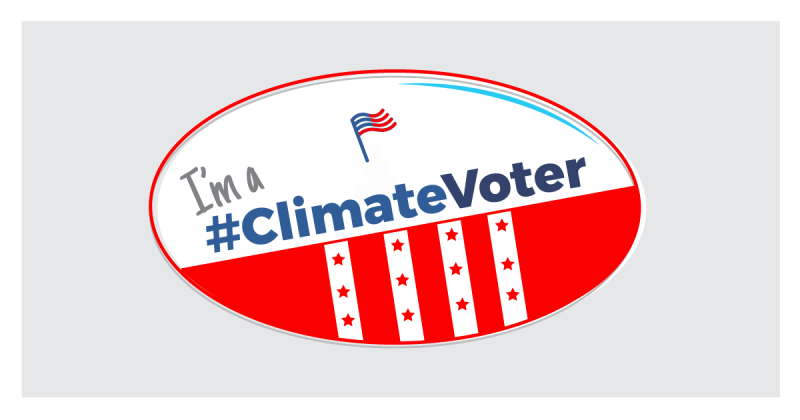
Source: Green Peace
What the action looks like: While we seek out personal changes that can help our carbon footprints minimize, working to get leaders elected who will tackle the problems of climate change and emissions can have the biggest impact of all. While we are all only responsible for our own carbon footprints, it is these elected officials who can demand accountability from larger entities in government, in industry, and in aggregate. So, you can make a huge impact by using your right to vote for candidates who prioritize and act on climate change. You can even volunteer your time and resources towards getting such climate positive candidates elected. The work isn’t done when the candidate who is more climate positive takes office, though, as it’s up to the electorate to keep those leaders accountable to their climate promises and their green goals.
What the impact is: It’s hard to quantify the impact of your contributions towards a climate-focused candidate, but once such a candidate is in office there’s truly no limit to what the end result could be.
Level of difficulty: Easy—you just need to educate yourself and you can get started today!
Relevant quotes, stakeholders, and resources:
7 Senate races to watch on energy and environment by EE News
How to Find Your Climate Candidates by Outside Online
“The most important action towards global warming is to tell your elected officials that this is a priority for you and you expect them to act on it. Citizens need to do the research to know who represents them, from school board up through the President, and have their contact information to weigh in. You don’t need to be a policy expert, just the fact that you express that it’s a pressing issue for you is enough to share with them.” – Andrea McGimsey, Senior Director, Global Warming Solutions Campaign
Join Climate Advocacy Groups
Source: Climate Advocacy Lab
What the action looks like: Beyond supporting specific climate candidates, many broader-focused groups exist that look to tackle climate change advocacy across all areas: pushing for regulatory changes, advocating in federal, state, and local elections, educating the public, and more. These groups can push for specific policies, fight injustice that is taking place, and help raise awareness and education on all issues related to climate change.
What the impact is: It’s hard to quantify the impact of your contributions towards a climate-focused candidate, but once such a candidate is in office there’s truly no limit to what the end result could be.
Level of difficulty: Easy—you just need to educate yourself and you can get started today!
Relevant quotes, stakeholders, and resources:
Campaign Carbon Footprints by the Washington Post
Educate Yourself and Others
Source: Sierra Club
What the action looks like: The saying “knowledge is power” may be cliche, but it became a well-known saying for a reason. When it comes to making sure you and your peers are motivated to take action on climate change and understand the best ways you can put up a fight against it, education must come first. Without adequate understanding of what climate change is, why it’s happening, and what can stop it, any advocacy or action will be stilted. Worse, a population that isn’t literate on climate, energy, the environment, and science, in general, are susceptible to being influenced by those trying to keep down the movement.
What the impact is: All of the above impacts may be for naught if they are implanted and supported by people educated by the issue, so it really all starts there. Further, according to a recent study in Yale School of Forestry & Environmental Studies, educated people who take action might actually find that these actions will be contagious to their peers, neighbors, and acquaintances:
For instance, several studies have demonstrated that the chances of an individual deciding to install solar panels increases as more panels are installed in their neighborhood or region. (One study calculated that for each additional installation in one California zip code, the probability of another increased by 0.78 percentage points.)
Level of difficulty: Easy—you’re already on this site, so you’re already taking the first steps towards educating yourself!
Relevant quotes, stakeholders, and resources:
The role of education in propelling climate action by The Commonwealth Education Hub
The role of climate change education on individual lifetime carbon emissions in PLOS One
How can environmental education help to combat climate change? by Iberdrola
“When researching and learning about climate, energy, and carbon footprints, people need to learn to go to the source. Trust the information and the evidence you can read yourself and whose sources you can trace and verify. That is the pillar of the Enlightenment that took us from the Dark Ages to now. The ability to question things and reason them out yourself by using peer-reviewed sources (that can be found at places like ScienceDirect, ResearchGate, or even Google Scholar) allows people to educate themselves and think critically about the best actions to take. This approach should not be left to just a handful of experts; it’s accessible to all and can be used by everyone.” – Greg P. Smestad, Ph.D. / Principal Consultant / Sol Ideas Technology Development
